#hatice sultan daughter of mehmed iv
Photo
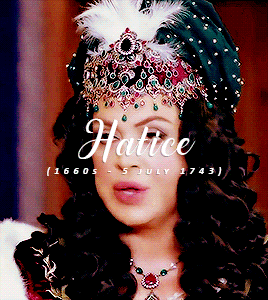



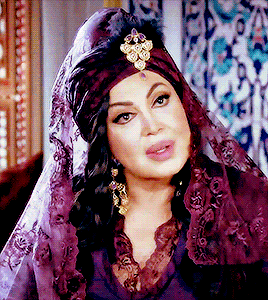

(OTTOMAN) WOMEN’S HISTORY MEME | 5 princesses: Hatice Sultan, daughter of Mehmed IV
Hatice Sultan is known to have repeatedly fêted her brothers, Mustafa II and Ahmed III, in her palaces. On the eve of the events that led to the disastrous revolt of 1730, she was holding a banquet for the sultan and the grand vizier, as well as a crowd of high-ranking dignitaries, at her Üsküdar palace on the Bosphorus. She has, in fact, been blamed for preventing the grand vizier from moving on to Istanbul that night in order to take immediate action against the rebels. Was she secretly a member of the opposition party, or was this an error of judgment on her part? In any case, it led to her brother Ahmed Ill's dethronement. When Hadice the Elder died in 1743 she was in her nineties. She could not possibly have been as ambitious and motivated a collector as she had once been. Nevertheless, she had managed to acquire a dozen pieces of European porcelain during the first ten years of their appearance in Ottoman lands. As a true collector, she must have retained the drive to hunt for the most recent diplomatic gifts presented to the new sultan, her nephew Mahmud I (r. 1730-54). — Tülay Artan, Eighteenth-century Ottoman Princesses as Collectors: Chinese and European Porcelains in the Topkapı Palace Museum
133 notes
·
View notes
Text
The myths around Kösem Sultan's execution / A Köszem szultána halála körüli legendák
One of the most frequently discussed topics about the Sultanate of Women is the brutal execution of Kösem Sultan. Usually, the casual people think that she was assassinated by her son-in-law Turhan Hatice Sultan during a long power struggle. We have plenty of accounts of the events, but there are quite a few of them that are contemporary. In this post, I would like to summarize what we know, who were the characters of the events, and what might have happened that night. In the comments section or in Tellonyme, I look forward to everyone's opinion and comment about the topic so that we can discuss it! :) If you don't know Kösem Sultan, you can read her biography HERE.
What do we know for sure?
- After Ibrahim's dethronement and execution, Kösem Sultan became a regent to her grandson Mehmed IV.
- Turhan, Mehmed’s mother, and Kösem Sultan were on different sides during the political games.
- Kösem Sultan was killed by her enemies on September 2, 1651.
- Turhan Hatice became the new regent, Kösem Sultan's executioners were not punished, but her supporters were soon killed.
Backstory
Kösem Sultan came to power for the second time in February 1640. Along with her crazy son, Ibrahim I, she began to rule the Ottoman Empire as regent. Everyone loved her, she had a huge experience in rule, she did a lot of charity. Everything seemed perfect, but her son, Ibrahim, soon came under the influence of bad advisers. Cinci Hoca was a religious leader in occult sciences who took advantage of the Sultan’s mental problems and seriously influenced him. As a result, the Sultan executed his Grand Vizier in 1644 and exiled his mother. He originally intended to send his mother to the island of Rhodes, but eventually, his concubines persuaded him to send her only to another palace. Kösem Sultan spent the next few years there in exile, but during that time she corresponded regularly with the statesmen and tried to keep everything under control. She probably wrote her well-known letter to Hezarpare Ahmed Pasha here, saying, "In the end, he will not leave you or me alive and we will lose control of the state again, thereby destroying our society." The situation deteriorated to the point that in 1647 Kösem Sultan and the new Grand Vizier, Salih Pasha and Seyhülislam Abdürrahim Efendi tried to dethrone Ibrahim but they failed. The next year, both the Janissaries and the Ulema joined the rebellion, and on August 8, 1648, the mad sultan was easily dethroned and imprisoned and his followers were removed from positions.
Ibrahim was succeeded by his son, Mehmed, who was barely 6 years old, andso he needed a regent. The statesmen asked Kösem Sultan for the honorary task. The position of regent was usually held by teachers, pashas, or mothers (in the case of Mehmed II, the Grand Vizier was regent; in Ahmed I, his mother and teacher; in Murad IV, and Ibrahim's case their mother), so Kösem Sultan was the first grandmother to become regent. According to the most accepted opinions, this happened because Mehmed’s mother, Turhan Hatice, was not even 25 years old at the time, too young and inexperienced to run the empire. Anyhow Kösem Sultan started her third regency and she constantly disregarded Mehmed’s mother, Turhan. Because of Turhan’s youth, she might truly would not have been the best regent, yet she had every right to control the harem. Kösem Sultan, however, did not allow this to the young woman either. So Turhan, in vain was the mother of the reigning sultan, all her duties were ruled by Kösem Sultan. Kösem Sultan gained more and more enemies both in the divan and the harem, so both places split into two sides: Kösem Sultan and her supporters and Turhan Sultan and her supporters.

Two opposite sides and characters
Kösem Sultan and her supporters
Kösem Sultan ruled the empire as a regent for decades, and when she was not a regent, she followed events as valide sultan. Earlier in her life, she worked together with most of the pashas. During her first regency, she said that she, as the representative of the ruler, intended to be there at the divan meetings in person. This was not allowed by the pashas and so she was forced to accept. During her third regency, however, she was not bowing before anyone’s will. She had lost all her sons, buried at least one daughter, sacrificed her whole life for the empire, so then she refused to compromise on anything anymore. She wished to rule the empire as an absolute monarch. And in the divan she dismissed everyone who disagreed with her. More and more people began to debate her right for ruling. One of her well-known divan speeches happed around this time. Kösem Sultan accused the Grand Vizier Sofu Ahmed Pasha of wanting to kill her, then she continued: “Thank God I survived four rulers and I ruled for a long time myself. The world will neither collapse nor reform with my death.”
Kösem Sultan went too far. She didn't just change the pashas she did not like but replaced them with Janissary officers. The Janissaries have served her with allegiance since the first regency of Kösem Sultan. Back then, in 1623, she went against everyone and gave the Janissaries a huge amount of money after Murad IV's accession to the throne. Although there were rebellions and disagreements, basically the Janissaries - but at least some of their corps - were loyal to Kösem Sultan. Representation of the Janissaries has been a thing for centuries, but to make Janissaries — or simply soldiers — vizieres was too much. Pashas learnt a lot and bore a lot to reach the highest possible positions and they were aware of how to be good veziers. This was their only aim and Kösem put Janissary officers there instead of educated statesmen. Everyone in the divan felt that Kösem Sultan wanted to build a military rule so that she could lead the empire in a way she liked. Thus, by 1651, only a few corps of Janissaries were actually on the side of Kösem in political terms. Although the people still loved her for her generous charity, in political terms their support did not mean much.
In addition to the growing tension with the pashas, Kösem Sultan had a rival in the harem also. Although most sources treat it as a fact that the relationship of Kösem Sultan and Turhan was terrible, there is no evidence to that effect. The relationship between the two of them only began to deteriorate over time, but in general, it can be said that Kösem Sultan just did not care about Turhan at all. She certainly looked down on her and didn't think much about Turhan. Kösem Sultan, although she had her own harem staff, did not have the most influential eunuch. Moreover, some said most of her servants also found her unworthy after realizing the way she treated Turhan. Perhaps it is no coincidence that so many sources mention a servant named Meleki Hatun, who famously switched sides and betrayed Kösem Sultan and began to strengthen Turhan’s side.

Turhan Hatice Sultan and her supporters
Turhan Hatice had more allies and so was in a better position in the harem than Kösem Sultan. She received help from an influential eunuch, Suleiman Agha. Suleiman aga was the leader of the harem agas, an ambitious eunuch with great power and contact system, with significant political influence. The harem was actually torn in two, thanks to the supporters of Kösem Sultan and Turhan Hatice. Both sides had their own chief eunuchs, which caused immense chaos within the harem, people did not know whose instructions to follow. And although the title of Valide Sultan belonged to Turhan Hatice as the mother of the sultan, the vernacular referred to her only as “small valide,” while Kösem Sultan was called “big valide”. Suleiman Agha's support, however, was worth its weight in gold. The eunuch looked primarily at his own interests throughout his life, and he had a great understanding of how to exploit and influence people. This is precisely why the possibility arises that it was Suleiman who set Turhan up and turned her against Kösem Sultan. Perhaps it was Suleiman who - hoping for his own rise from the young valide - persuaded her to take what was her right. In addition, Suleiman Agha was very liked by the young sultan, becoming a kind of father figure for the boy. Of course, it is not my intention to underestimate the role of Turhan in the events, but at the same time, I feel that the role of Suleiman Agha is actually underrated and I would like to make that clear. I’m not saying Turhan was a naive girl led by the evil Suleiman Agha, I just think that without Suleiman’s support and incitement, Turhan probably wouldn’t have, or much later, confronted Kösem Sultan.
In addition to Suleiman, three other major eunuchs also sided with Turhan: Hoca Reyhan Agha, Lala Hajji Ibrahim Agha, and Ali Agha. Hoca Reyhan Agha was closest to Turhan as his associate and religious leader, but Lala Hajji Aga was also a long-term partner in Turhan’s life. In addition to the eunuchs, we must also mention Meleki Hatun, whose legend is well known. According to this, she was the one who betrayed the plan of Kösem Sultan to Turhan, thus saving the little Sultan Mehmed from death and dethronement. However, the reality is probably less romantic. It is unlikely that a previously insignificant, never-ever mentioned servant like Meleki would have known about Kösem Sultan's plans and so could betray her. Certainly, Meleki was given a bigger role in the legend than she actually had. Maybe Meleki has agreed to be a scapegoat, testifying against Kösem Sultan if she gets goods in return. Given what a huge fortune Meleki gained after Kösem Sultan’s death, we can’t rule out this option either. Even if Meleki brought supporters for Turhan within the harem, she could have had quite a bit of an impact on the whole event. In addition to Turhan, the key figure was Suleiman Agha, who also had a close relationship with the divan, so he could easily connect members of the divan who were dissatisfied with Kösem Sultan. The most influential supporter was none other than the Grand Vizier, Siyavuş Pasha, but practically the entire divan turned against Kösem Sultan so far. It should also be mentioned that although most formations of the Janissaries were impartial or were on Kösem Sultan's side, the Sipahies tended to the group of Turhan and her supporters.

What led to the tragic night?
Before turning to the immediate causes, we need to jump back a bit in time to better understand Kösem Sultan's behavior. As is well known, Ibrahim I was succeeded by his son, Mehmed, barely 6 years old, who needed a regent. The statesmen asked Kösem Sultan for the honorary task. However, the request was rather strange. Why is that? The regent position was usually held by teachers, pashas, or mothers, and Kösem Sultan was none. Moreover, Kösem Sultan rejected the request for the first time on the grounds that she no longer has the strength to rule further.
Why did Kösem Sultan take on the task? Did she really want to retire?
To understand Kösem Sultan's thoughts, we need to jump a little further back in time. Kösem Sultan was in exile for years during Ibrahim's reign. From her exile, she repeatedly attempted a coup against her own son. From one of her surviving letters in exile, it is clear that she was part of the coup that eventually dethroned her son. Outwardly, however, she showed a very different picture. After Ibrahim was shut down, they wanted to put his son, Mehmed, on the throne. Kösem Sultan then met with the statesmen at Topkapi Palace to discuss with them what Ibrahim's fate should be. They negotiated for hours, but Kösem Sultan all along refused to give Ibrahim's eldest son to the statemen. The statesmen had to publicly convince Kösem Sultan for hours. Kösem Sultan who had previously done everything to dethrone her son is now standing by his son. Why? Of course, we will never know exactly what happened in her mind. However, it seems probable, that Kösem Sultan wanted to keep the image of a loving mother in front of the soldiers and the people. If she would just agree to Ibrahim's dethronement and Mehmed's enthronement that would be strange from a loving mother. Therefore, she held a sham debate with the pashas not to lose the sympathy of the people, but at the same time to keep the empire safe. Kösem Sultan was an experienced politician who was able to rule for years, and her loving and caring mother image was essential to that. Thus, with Kösem Sultan's consent, Sultan Ibrahim was eventually closed up and Mehmed has proclaimed their new sultan. Perhaps the first rejection of regency in 1648 was also part of a play like this. Kösem Sultan maybe felt the people expect this of her, so she offered to retire, while maybe in the background she had already agreed with the pashas.
And why did the members of the divan let Kösem Sultan to be the regent? After all, any of the members of the divan or even Mehmed's teacher could have applied for the task. And that would give huge power to them. So why did they give this opportunity to Kösem Sultan?
Ibrahim I was executed on August 18, 1648. Some say Kösem Sultan gave her consent to the execution but it cannot be ruled out that the execution took place behind her back. As I mentioned above, the mother of the dethroned or assassinated sultans has traditionally retreated to the Old Palace, where they lived their remaining years politically inactive. In her case, however, this did not happen. This raises the possibility that Kösem Sultan was unaware of Ibrahim’s execution and the pashas tried to reconcile the shattered woman with this gesture. Maybe Kösem gave her consent, knew what will happen, but still in the end she couldn't bear the pain. Either way, after the execution Kösem Sultan has changed. She turned against the pashas with whom she had always cooperated before. Whichever version is true, we can clearly see that the Kösem Sultan who became a regent to Mehmed IV, was no longer the same woman who had previously been considered the beloved mother of the empire.
But who ordered the execution of Ibrahim? Do we know? No, we do not know. Actually any of the statesmen could do it, but either Suleiman Agha or Turhan Sultan could make the little sultan to sign the fetwa petition and then send it to the Seyhülislam to authorize. Anyhow, the fetwa was authorized with full right, as Ibrahim was very harmful to the empire.

The murder
As can be seen from the above summary, Kösem Sultan was trying to build an absolute monarchy in which no one but a few Janissary corpses supported her, so a huge team gathered against her. According to the well-known version, over time, the strife between Kösem Sultan and the statesmen escalated to the point that, with the support of Turhan Hatice, the statesmen tried to remove her from her position. Kösem Sultan in response to this planned to dethrone Sultan Mehmed and put her other grandson on the throne instead. To do this, she wanted to let the Janissaries into the palace so that they could carry out the coup at night, which is why she left the gate to the harem open for the night. However, Kösem Sultan's plan was revealed to her enemies. According to some it was a servant named Meleki Hatun, who betrayed Kösem and told her plans to Turhan. Thus, as soon as the men of Kösem Sultan opened the gate on September 2, 1651, the men of Turhan Hatice, led by Chief Eunuch Suleiman Agha, closed it and sent an execution squad to the residence of Kösem Sultan. When she heard knocking on her door Kösem Sultan thought that her own allies had come, so she shouted at them, “Have you come?”. However, instead of the voice of the Janissaries, she heard the voice of the eunuch Suleiman Agha, which made her panic and flee. It’s not exactly known if she did get out of her apartment and if yes then how because the descriptions don’t match. Some said she hid in a closet inside her apartment, others said she tried to get to the Janissaries, but she couldn’t get through the closed gate, so she finally hid in the room next to the gate.
The execution squad, which consisted of several eunuchs (Suleiman Agha, Hoca Reyhan Agha, Lala Hajji Ibrahim Agha, and Ali Agha, as well as some unknown eunuchs) continued the search. Kösem Sultan hid in a closet from which the edge of her dress protruded, revealing her hiding place. When they found her, she threw money at her executioners, trying to pay them off, but she had no chance against Turhan's loyal men. Legend has it that while the men tried to capture and strangle the valide sultan they ripped out her diamond earrings - which she had received from Sultan Ahmed - from her ears; torn apart her clothes as they tried to take away the precious ornaments from her. Kösem Sultan beyond her sixties fought very hard but in the end, the eunuchs overcame her. Some say she was strangled with her own hair, others said with a curtain. She survived the first strangulation attempt but did not survive the second.

However, there are several points in the story above that raise doubts:
- Kösem Sultan's problem was not Mehmed but was the pashas, Turhan and Suleiman Agha. Then why didn't she get rid of them? Wouldn’t it have been easier and more logical to kill these people than to dethrone one child sultan for the benefit of another child? Of course, we can justify this with the fact that Kösem Sultan was no longer sane, so let’s not even look for logic in her actions. However, it may also raise the possibility that perhaps Kösem Sultan was completely or at least partially innocent throughout the series of events. She may not have planned anything with the Janissaries, the whole plan was only invented by Turhan and her men to legitimize their own actions. However, it contradicts that the Janissaries were indeed preparing to gather on the tragic night, and it is unlikely that Turhan and her team could successfully cheat the Janissaries without Kösem Sultan realizing it. It is possible that Kösem Sultan was indeed prepared for a minor coup, but it was perhaps not directed against Mehmed. Kösem Sultan had to realize that besides the pashas, Suleiman Aga was behind the "rebellious" behavior of Turhan and Mehmed. I think Kösem Sultan planned a smaller coup in which she would have got rid of the eunuchs and servants she didn’t like and would have scared Mehmed and Turhan. This would have ensured her own power and that neither Turhan nor Mehmed would question her anymore.

- Why was Kösem Sultan killed in such a strange way? After all, the lawful, usual method of execution was by an execution squad with Seyhülislam fetwa and silk/bow string. (It is important to note, however, that female members of the dynasty have not been executed before, women have typically been punished only with exile.) Kösem Sultan in contrast was killed by inexperienced eunuchs, with a kind of fake fetwa, and by her own hair or a curtain. The question arises that perhaps the execution of Kösem Sultan was not even planned. If the execution would be planned, executioners could clearly kill her after a legal fetwa. About the fetwa... There was, of course, a fetwa, but the temporality is somewhat disturbed by the fact that the Seyhülislam was replaced by one of Turhan's trusted men just when the execution took place. Precisely because of this, and because of the unusual brutality of the execution, there is a possibility that perhaps the execution of Kösem Sultan was not originally planned, only things slipped out of control, and in the heat of the moment, the Eunuchs executed Kösem Sultan. In retrospect, to legalize the events, they produced a fetwa with the new Seyhülislam.

- But then who and why did finally decide that Kösem Sultan should die? Turhan was not present at the events, and since the murder was not planned in advance - based on the fetwa and executioners - I would remove her from the list of suspects. Of course, it cannot be ruled out that Turhan Hatice Sultan and Suleiman Agha talked about this possibility also. It is more probable, however, that they originally merely wanted to scare Kösem Sultan, to show her that she had been exposed, that time had passed over her. In my opinion, Turhan hoped that Kösem Sultan would admit her defeat and simply retire to the Old Palace. It would have been too risky to kill a venerate and beloved valide, especially knowing that none of the female members of the dynasty had ever been executed before. They probably wanted to resign her, but so far there was nothing to lose for Kösem Sultan. The only thing that still made her vivid was power, so she certainly objected to the idea of forced retreat. When Suleiman Agha realized that Kösem Sultan was not listening to them, perhaps out of fear, he decided they had to kill her. After all, if the enraged Kösem Sultan had come out of the palace, Suleiman and the other eunuchs would have found themselves headless at once. Although there is no evidence of it, my personal opinion is that Suleiman may have wanted this from the first minute, as he knew full well that Kösem Sultan would never retire. Either way, the eunuchs eventually defeated and executed the elderly valide in a way that could not be called professional at all.

- Can we completely rule out that Kösem Sultan was executed with a truly legal fetwa and by an execution squad? Unfortunately, this cannot be ruled out either. The English ambassador, for example, reported that an execution squad had killed Kösem Sultan after a fetwa requested by the young sultan. He said that the execution happened in front of Mehmed eyes. We must admit though that the English ambassador was not among the best-informed ones. It is likely that everyone at the time believed that the fetwa was pre-issued. Only later, after historians’ research, it became very possible that the fetwa was presumably made after the execution of Kösem Sultan. It is not seems reasonable that Kösem Sultan would have been executed before the eyes of her 10-year-old grandson, Mehmed. Turhan tried very hard to protect her son, unlikely to have exposed him to such a trauma. Mustafa Naima agrees with the English ambassador that the execution was planned in advance, but he said it was not the eunuchs but an execution squad that killed Kösem Sultan. However, then why was the execution brutal? Why wasn't there a silk/bow string? Why was it performed by unfit eunuchs?

The aftermath of the murder
To prevent any resistance, during the night, Turhan Hatice and her men removed all statesmen who would have endangered them. The first man to be appointed that night was Ebu Said Efendi, the new Seyhülislam. He was the one who eventually issued the fetwa for the execution of Kösem Sultan (in retrospect). Turhan then sent a message to all statesmen and soldiers to immediately go to an audience where they would take allegiance to Sultan Mehmed. Most, out of fear or out of sincere feelings, immediately approached the Sultan, and those who did not, the new Seyhülislam issued a fetwa for them. Thus it became lawful to execute the supporters of Kösem Sultan, since they did not appear before the Sultan either. And the rebellious Janissaries were thus stigmatized as traitors and were legally executed. For commoners, they became the scapegoat for the death of Kösem Sultan. After the murder, Kösem Sultan was transported to the Old Palace, where her body was prepared for the funeral. She received an imperial funeral, and the people of Istanbul voluntarily held 3-day mourning, closing all shops and stores. Kösem Sultan has always been popular among the people, but interestingly the same people did not turn against Turhan because of the death of Kösem Sultan, in fact, Turhan became as loved and revered valide sultan just as Kösem Sultan was.
What happened to the real culprits? Turhan and Mehmed escaped, of course, but it is questionable whether they had any part in the murder at all. It is true that a rebellion in 1656 seriously shook their power, but in the end, they did not lose it. The main reasons for this were the weak Grand Veziers, the resurgent Celali rebellion, and the war with the Venetians. Due to the war people of the capital did not get enough grain, the soldiers were not properly paid, but ordinary people were also increasingly dissatisfied, especially angered by the extreme wealth of those close to the Sultan. Eventually, under the leadership of the Janissaries and Spahis, the people revolted on the fourth of March 1656. During the rebellion, several of those close to the sultan were brutally executed, the whole capital was ravaged. The mob hung all 31 people on trees next to the Blue Mosque. Among them was Meleki Hatun, whom the sultan especially loved. Although the capital has been shaken by riots in the past, such a rebellion has never happened before. Not only did the soldiers revolt, but the people also stood by the soldiers as one. Everyone closed their shops, a general strike took place during the rebellion.
Suleiman Agha was no longer in power when the rebellion took place and perhaps this held his head on his neck. After the assassination of Kösem Sultan, he became the chief black eunuch, but he could only enjoy the position until July 1652. Suleiman continued to stretch beyond his blanket, trying to change political issues that had nothing to do with him. Turhan Hatice also began to realize that Suleiman was not on their side at all, but only on his own. Of particular interest is that Lala Ibrahim Agha convinced Turhan of this, who himself took part in the execution of Kösem Sultan. Lala Ibrahim Agha was Turhan’s personal eunuch and he never longed (or wisely didn’t show her) for a higher position. Turhan was thus finally dismissed Suleiman Agha in 1652 and exiled him to Egypt. The refined eunuch even invented himself in exile, growing into an influential figure who became one of the main figures in Cairo’s local politics. He died in 1676/7.

Epilogue
We will probably never know exactly what led to the execution and how it took place. Nor was my aim with the post to present a perfect solution in the manner as Hercule Poirot usually does. I merely wished to shed light on the fact that the generally known and accepted theory should be regarded with some healthy doubts. The fact that it is the most generally accepted theory, does not mean it is the most thorough. There are plenty of question marks, dubious information which makes it clear that this whole situation was more complicated than two women fighting for domination over the harem.
Kösem Sultan was the sultana who broke the highest, who could have been at the top for a long time, but from the great heights, she finally fell down and became the only murdered valide sultana ever. Kösem Sultan had several titles during her life: Naib-i Sultanat (regent of the Ottoman Empire), Umin al-Mu'minin (mother of all muslims), Büyük Valide Sultan (great Valide Sultan), Valide-i Sehide (martyred mother), Valide-i Maktule (murdered mother), Valide-i Muazzama (magnificent mother).

Used sources: M. Kocaaslan - IV. Mehmed Saltanatında Topkapı Sarayı Haremi: İktidar, Sınırlar ve Mimari; L. Peirce - The Imperial Harem; Ö. Kumrular - Kösem Sultan: iktidar, hırs, entrika; C. Finkel - Osman’s Dream: the History of the Ottoman Empire; M. P. Pedani - Relazioni inedite; N. Sakaoğlu - Bu Mülkün Kadın Sultanları; G. Börekçi - Factions and Favorites at the Courts of Sultan Ahmed I and His Immediate Predecessors; F. Davis - The Palace of Topkapi in Istanbul; Faroqhi - The Ottoman Empire and the World; C. Imber - The Ottoman Empire 1300-1650; F. Suraiya, K. Fleet - The Cambridge History of Turkey 1453-1603; F. Suraiya - The Cambridge History of Turkey, The Later Ottoman Empire, 1603–1839; Ö. Düzbakar - Charitable Women And Their Pious Foundations In The Ottoman; G. Junne - The black eunuchs of the Ottoman Empire, Networks of Power in the Court of the Sultan.
* * *
A Nők szultánátusának egyik legtöbbször tárgyalt témája Köszem szultána brutális kivégzése. Általában a laikusok elintézik annyival, hogy Köszem szultánát menye, Turhan Hatice gyilkoltatta meg hosszas hatalmi harc lezárásaként. Rengeteg beszámoló áll rendelkezésünkre az eseményekről, ám meglehetősen kevés van köztük, mely konkrétan korabeli lenne. Ebben az írásban szeretném összegezni, hogy mit tudunk, kik voltak a szereplők az eseményekben és hogy mi történhetett azon a bizonyos éjjelen. A kommentszekcióban várom mindenki véleményét, megjegyzését a témáról, hogy meg tudjuk vitatni a posztot! :) Aki nem ismerné Köszem szultánát, az ITT tudja elolvasni életrajzát.
Mit tudunk biztosan?
- Köszem I. Ibrahim trónfosztása és kivégzése után régens lett unokája IV. Mehmed mellett.
- Turhan, Mehmed anyja és Köszem külöböző oldalon álltak a politikai játszmák során.
- Köszemet 1651. szeptember 2-án meggyilkolták ellenségei.
- Turhan Hatice lett az új régens, Köszem gyilkosai nem lettek megbüntetve, támogatóitól azonban rövidesen megszabadultak.
Előzmények
Köszem szultána 1640 februárjában másodjára került hatalomra. Zavart elméjú fia, I. Ibrahim mellett régensként kezdte irányítani az Oszmán Birodalmat. Köszemet mindenki szerette, az uralkodásban hatalmas tapasztalata volt, rengeteget jótékonykodott. Minden tökéletesnek tűnt, azonban fia, Ibrahim hamarosan rossz emberek befolyása alá került. Cinci Hoca okkult tudományokkal foglalkozó vallási vezető volt, aki kihasználta a szultán mentális problémáit és komolyan befolyásolta őt. Ennek az lett az eredménye, hogy a szultán 1644-ben a nagyvezírét kivégeztette, édesanyját pedig száműzte. Eredetileg Rodosz szigetére szándékozta küldeni anyját, de végül ágyasai meggyőzték, hogy csak egy másik palotába küldje. Köszem elkövetkezendő éveit ott töltötte száműzetésben, ám ezalatt az idő alatt is rendszeresen levelezett az államférfiakkal és igyekezett kézben tartani mindent. Valószínűleg itt írta meg jól ismert levelét is Hezarpare Ahmed Pasának, mely így szólt: “Végül sem titeket, sem engem nem hagyna életben és újra elveszítenénk az uralmat az állam felett, ezzel pedig lerombolnánk társadalmunkat.” Odáig fajult a helyzet, hogy 1647-ben Köszem szultána és az új nagyvezír, Salih Pasa és a Seyhülislam Abdürrahim Efendi megpróbálták trónfosztani Ibrahimot, azonban lebuktak. A következő évben a janicsárok és az ulema is csatlakozott a lázadáshoz és 1648 augusztus 8-án könnyűszerrel trónfosztották és bebörtönözték az őrült szultánt, követőit pedig eltávolították a pozíciókból.
Ibrahimot a trónon fia, az alig 6 éves Mehmed követte, aki mellett szükség volt egy régensre. Az államférfiak Köszemet kérték fel a megtisztelő feladatra. A régensi pozíciót általában tanítók, pasák vagy édesanyák látták el (II. Mehmed esetében a nagyvezír volt régens, I. Ahmednél anyja és tanítója, IV. Muradnál és I. Ibrahimnál anyjuk), így Köszem volt az első nagymama, akiből régens lehetett. Erre a legelfogadottabb vélemények szerint azért kerülhetett sor, mert Mehmed édesanyja, Turhan Hatice még 25 éves sem volt ekkor, túl fiatal és tapasztalatlan volt a birodalom irányításához. Köszem tehát belekezdett harmadik régensségébe és folyamatosan semmibe vette Mehmed édesanyját, Turhant. Turhan fiatalsága okán talán tényleg nem lett volna jó régens, ugyanakkor a hárem irányításához minden joga megvolt. Köszem viszont ezt sem engedte meg a fiatal nőnek. Turhan tehát hiába volt a regnáló szultán anyja, minden feladatkörét Köszem uralta. Emellett Köszem a divánban is egyre több ellenségre tett szert, így a hárem és a divan is két oldalra szakadt: Köszem támogatóira és Turhan támogatóira.

Két, szemben álló oldal és a szereplők
Köszem oldala
Köszem évtizedeken át uralta régensként a birodalmat, amikor pedig nem régens volt, valideként követte figyelemmel az eseményeket. Életének korábbi szakaszában a legtöbb pasa mellette állt, ami nem volt elmondható harmadik régensségéről. Köszem első régenssége alatt is jelezte, hogy ő, mint az uralkodó reprezentálása ott kíván lenni a divan gyűléseken személyesen. Ezt akkor a pasák nem engedték meg neki, amit ő kénytelen-kelletlen el is fogadott. Harmadik régenssége során azonban szó sem lehetett arról, hogy meghajoljon bárki akarata előtt. Elveszítette összes fiát, legalább egy lányát is eltemette már, egész életét a birodalomnak áldozta, nem volt hajlandó többé bármiben is kompromisszumot kötni. Gyakorlatilag egyeduralkodóként kívánta irányítani a birodalmat. A divanban pedig aki nem értett vele egyet, azt eltiporta és menesztette. Köszem jogát az uralkodáshoz egyre többen kezdték el vitatni, egyik ilyen divan vita során hangzott el a jól ismert beszéde is. Ekkor Köszem megvádolta a nagyvezír Sofu Ahmed Pasát azzal, hogy meg akarta őt öletni, majd így folytatta: “Istennek hála négy uralkodót segítettem és én magam is hosszú ideig uralkodtam. A világ nem fog sem összeomlani sem megreformálódni a halálommal.”
Köszem azonban nem elégedett meg a pasák megalázásával, tanácsaik el nem fogadásával. Még csak nem is neki tetsző más pasákra cserélte le őket, hanem janicsárokat kezdett vezíri rangra emelni. A janicsárok Köszem első régenssége óta hűséggel szolgálták az asszonyt, amiért az mindenkivel szembe menve 1623-ban hatalmas trónralépési jussot adott a janicsároknak IV. Murad trónralépése után. Bár voltak lázadások és egyet nem értések, alapvetően a janicsárok - de legalábbis néhány hadtestük - hűségesek voltak Köszemhez. A janicsárok képviselete évszázadok óta működött, azonban az, hogy janicsárokat - vagy egyszerűen katonákat - tegyenek vezírré a kitanult államférfiak helyett, több volt a soknál. Mindenki úgy érezte a divanban, hogy Köszem egy katonai uralmat kíván kiépíteni, hogy a neki tetsző módon vezethesse a birodalmat. Így Köszem oldalán 1651-re tulajdonképpen csak a janicsárok néhány hadteste állt politikai értelemben. Bár a nép továbbra is szerette őt bőkezű jótékonykodása miatt, politikai értelemben az ő támogatásuk nem jelentett sokat.
Amellett, hogy a pasákkal egyre nőtt a feszültség, Köszem a háremben is riválisra akadt. Bár a legtöbb forrás tényként kezeli, hogy Köszem és menye, Turhan viszonya tragikus volt, nincs erre utaló bizonyíték. Kettejük viszonya csak az idő előrehaladtával kezdett megromlani, általánosan azonban inkább az mondható el, hogy Köszem egyáltalán nem foglalkozott menyével. Mindenbizonnyal lenézte és nem tartotta sokra Turhant, így komolyan sem vette a nőt. Köszemnek bár megvolt a saját hárem személyzete, a legbefolyásosabb eunuch nem volt a kezében. Mindemellett egyesek szerint szolgálói nagyrésze is méltatlannak találta, ahogy Köszem Turhannal bánt. Talán nem véletlen, hogy oly sok forrás említi a Meleki Hatun nevű szolgálót, aki híresen oldalt váltott és Köszemet elárulva Turhan oldalát kezdte erősíteni.

Turhan Hatice oldala
Turhan Hatice a háremben jobban állt, mint Köszem. Segítséget kapott egy befolyásos eunuchtól, Szulejmán agától. Szulejmán aga volt a hárem agák vezetője, aki nagy hatalommal és kapcsolatrendszerrel rendelkező, ambíciózus eunuch volt, jelentős politikai befolyással. A hárem tulajdonképpen két oldalra szakadt, Köszem és Turhan Hatice támogatóira. Mind a két oldalnak megvolt a saját főeunuchja, ami hatalmas káoszt okozott a háremen belül, az emberek nem tudták, kinek az utasításait kövessék. És bár a valide szultána titulus a szultán anyjaként Turhan Haticét illette meg, a köznyelv csak “kis valide”-ként hivatkozott rá, míg Köszem volt a “nagy valide”. Szulejmán Aga támogatása ugyanakkor aranyat ért. Az eunuch első sorban a saját érdekeit nézte egész élete során, azonban remekül értett ahhoz, hogyan használjon ki és vezessen meg embereket. Épp emiatt felmerül annak a lehetősége is, hogy Szulejmán volt az, aki Turhant felbújtotta és Köszem ellen hangolta. Talán Szulejmán volt az, aki saját felemelkedését remélve a fiatal validétől, meggyőzte arról, hogy vegye el ami a saját jussa. Emellett Szulejmán Aga az ifjú szultánnal is megkedveltette magát, egyfajta apafigurává vált a fiú számára. Természetesen nem célom alábecsülni Turhan szerepét az eseményekben, ugyanakkor úgy érzem, hogy Szulejmán Aga szerepe ténylegesen alábecsült és ezt szeretném mindneképpen érzékeltetni. Nem azt mondom, hogy Turhan egy naíva volt, akit megvezetett a csúf, rossz Szulejmán Aga, csupán azt gondolom, hogy Szulejmán támogatása és felbújtása nélkül, Turhan valószínűleg nem, vagy sokkal később szállt volna szembe Köszemmel.
Szulejmán mellett három másik jelentősebb eunuch is Turhan oldalán állt, Hoca Reyhan Aga, Lala Hajji Ibrahim Aga és Ali Aga. Hoca Reyhan Aga állt legközelebb Turhanhoz, mint társalkodója és vallási vezetője, de Lala Hajji Aga is hosszútávú partner volt Turhan életében. Az eunuchok mellett meg kell említenünk Meleki Hatunt is, akinek legendája jól ismert. Eszerint ő volt az, aki Köszem tervét elárulta Turhannak, ezzel megmentve a kis Mehmed szultánt a haláltól és trónfosztástól. A valóság azonban valószínűleg kevésbé romantikus. Valószínűtlen, hogy egy korábban sosem említett, jelentéktelen szolgáló, mint Meleki tudott volna Köszem terveiről és el tudta volna árulni. Minden bizonnyal Melekit csupán oldalváltása miatt ruházták fel nagyobb szereppel, mint ami valójában volt. Talán Meleki elvállalta, hogy lesz bűnbak, tanúskodik Köszem ellen, ha cserébe javakat kap. Legalábbis tekintettel arra, hogy Meleki milyen hatalmas vagyonra tett szert Köszem halála után, nem zárhatjuk ki ezt az opciót sem. Meleki ha a háremen belül hozott is támogatókat Turhan számára, az egész eseményre meglehetősen kevés ráhatása lehetett. A kulcs figura Turhan mellett Szulejmán aga volt, akinek komoly kapcsolata volt a divánnal is, így könnyedén tudta csapatukhoz kapcsolni a divan Köszemmel elégedetlen tagjait is. A legbefolyásosabb támogató nem volt más, mint a Nagyvezír, Siyavuş Pasa, de gyakorlatilag szinte a teljes divan Köszem ellen fordult eddigre. Azt is meg kell említeni, hogy bár a jancsiárok legtöbb alakulata pártatlan vagy Köszem párti volt, a szpáhik inkább húztak a Turhan támogatói csoport felé.

Mi vezetett a tragikus éjszakához?
Mielőtt a közvetlen okokra rátérnék, kicsit vissza kell ugranunk az időben, hogy jobban megérthessük Köszem viselkedését. Mint ismert, trónfosztása után, I. Ibrahimot a trónon fia, az alig 6 éves Mehmed követte, aki mellett szükség volt egy régensre. Az államférfiak Köszemet kérték fel a megtisztelő feladatra. Ugyanakkor a felkérés meglehetősen furcsa volt. Miért is? A régensi pozíciót általában tanítók, pasák vagy édesanyák látták el, Köszem pedig egyik sem volt. Sőt, Köszem a felkérést először elutasította arra hivatkozva, hogy már nincs ereje tovább uralkodni.
Miért vállalta el Köszem mégis a feladatot? Valóban vissza akart vonulni?
Ahhoz, hogy megértsük Köszem gondolatait, még egy kicsit visszább kell ugranunk az időben. Köszem Ibrahim uralkodása során száműzetésben volt éveken át. Száműzetéséből pedig többször kísérelt meg puccsot saját fia ellen. Egyik száműzetésben írt levele alapján egyértelmű, hogy részese volt a puccsnak, mely végül fiát trónfosztotta. Kifelé azonban egészen más képet mutatott. Miután Ibrahimot elzárták, trónra szerették volna léptetni fiát, Mehmedet. Köszem szultána ekkor találkozott a Topkapi Palotában az államférfiakkal, hogy megvitassa velük mi legyen Ibrahim sorsa. Órákon át tárgyaltak, Köszem azonban végig megtagadta, hogy kiadja Ibrahim legidősebb fiát, Mehmedet. Így pedig nem lehetett őt kikiáltani szultánnak. Az államférfiaknak órákon keresztül kellett nyilvánsoan győzködniük Köszemet. Az a Köszem, aki korábban mindent elkövetett fia trónfosztásáért, most fia mellett állt ki. Miért? Természetesen sosem fogjuk megtudni, hogy Köszem fejében pontosan mi játszódott le. Valószínűnek tűnik azonban, hogy Köszem szerette volna megtartani a katonák és nép előtt a szerető anya képét, melybe nem fért bele saját fiának trónfosztása. Ezért egy álvitát tartott a pasákkal, hogy ne veszítse el a nép szimpátiáját, de ugyanakkor a birodalomnak is jót tegyen. Köszem tapasztalt politikus volt, aki éveken át tudott vezető szerepben maradni, ehhez pedig nélkülözhetetlen volt az imázs is. Így végül Köszem beleegyezésével elzárták Ibrahim szultánt, Mehmedet pedig új szultánjukká kiáltották ki. Talán a régensség első elutasítása is egy ehhez hasonló színjáték része volt. Köszem talán úgy érezte, hogy a nép ezt várja tőle, ezért felajánlotta visszavonulását, miközben talán a háttérben már régen megegyezett a pasákkal.
És a divan tagjai miért hagyták, hogy Köszem legyen a régens? Hiszen a divan tagjai közül akárki vagy akár Mehmed tanítója is jelentkezhetett volna a feladatra. Ez pedig hatalmas befolyást tett volna a férfiak kezébe. Miért engedték hát akkor át ezt a lehetőséget Köszemnek?
I. Ibrahimot 1648. augusztus 18-án kivégezték. Egyesek szerint Köszem szultána beleegyezését adta fia kivégzésébe, ám az sem zárható ki, hogy a kivégzés a háta mögött történt meg. Mint már fentebb említettem a trónfosztott vagy meggyilkolt szultánok édesanyja a tradíció szerint a Régi Palotába vonult vissza, ahol politikamentesen élték hátralévő éveiket. Köszem esetében azonban nem ez történt. Ez felveti annak eshetőségét, hogy Köszem nem tudott Ibrahim kivégzéséről és a pasák ezzel a gesztussal igyekeztek kiengesztelni az összetört nőt. De akkor ki rendelte el Ibrahim kivégzését? Gyakorlatilag bárki megtehette az államférfiak közül, de akár Szulejmán aga vagy Turhan is aláírathatta a fetwa kérvényt a kis szultánnal, melyet aztán a Seyhülislam teljes joggal engedélyezett, hiszen Ibrahim nagyon kártékony volt a birodalomra nézve. Akárhogyan is, Köszem a kivégzés után megváltozott. Vagy azért fordult a pasák ellen - akikkel korábban mindig együttműködő volt -, mert azok átverték őt Ibrahim kivégzésével kapcsolatban; vagy egyszerűen anyai szíve nem bírta elviselni, hogy beleegyezését adta fia kivégzésébe és megbomlott az elméje. Bármelyik verzió is igaz, azt tisztán látjuk, hogy az a Köszem, aki IV. Mehmed mellett régens lett, már nem ugyanaz az ember volt, akit korábban a birodalom imádott anyjának tekintettek.

A gyilkosság
Ahogy a fenti összefoglalásból is kiderül, Köszem egyeduralmat próbált kiépíteni, melyben néhány janicsár hadtesten kívül senki nem támogatta, így hatalmas csapat gyűlt össze ellene. A jól ismert verzió szerint, idővel a viszály Köszem és az államférfiak között odáig fajtult, hogy Turhan Hatice támogatásával az államférfiak megpróbálták Köszemet eltávolítani pozíciójából. Köszem válaszul erre azt tervezte, hogy trónfosztja IV. Mehmed szultánt és helyette másik unokáját ülteti a trónra. Ehhez a janicsárokat be kívánta engedni a palotába, hogy azok az éj leple alatt elvégezzék a puccsot, emiatt nyitva hagyatta éjszakára a hárem bejáratát. Köszem terve azonban ellenségei fülébe jutott, egyesek szerint egy Meleki nevű szolgáló által. Így amint Köszem emberei 1651. szeptember 2-án, kinyitották a kaput, Turhan Hatice emberei, a főeunuch Szulejmán Aga vezetésével bezáratták azt és kivégzőosztagot küldtek Köszem szultána lakrészébe. Mikor emberei Köszem lakrészéhez érve bekopogtak az ajtón, Köszem azt hitte, hogy saját emberei jöttek, ezért kikiabált nekik, hogy “Megjöttetek?”. Erre azonban a janicsárok hangja helyett Köszem az eunuch Szulejmán Aga hangját hallotta meg, amitől bepánikolt és menekülni kezdett. Nem pontosan tudni, hogy hogy jutott ki lakrészéből vagy ki jutott e egyáltalán, mert a leírások nem egyeznek. Egyesek szerint lakrészén belül bújt el egy szekrényben, mások szerint megpróbált kijutni a janicsárokhoz, azonban a zárt kapun keresztül nem tudott, így végül a kapu melletti szobában bújt el.
A kivégzőosztag, amely több eunuchból (Szulejmán Aga, Hoca Reyhan Aga, Lala Hajji Ibrahim Aga és Ali Aga, valamint néhány ismeretlen eunuch) állt folytatta a keresést. Köszem egy szekrényben rejtőzött el, melyből ruhájának széle kilógott, ezzel felfedve rejtekhelyét. Amikor megtalálták, kivégzői elé pénzt dobott, ezzel próbálva lefizetni őket, ám esélye sem volt Turhan hű embereivel szemben. A legenda szerint a férfiak próbálták lefogni a validét, miközben füléből kitépték gyémánt fülbevalóit, melyeket Ahmed szultántól kapott; ruháját is megtépkedték, ahogy próbálták leszedni róla az értékes díszeket. Köszem túl a hatvanon is erősen ellenállt kivégzőinek, ám végül felülkerekedtek rajta. Egyesek szerint saját hajával, mások szerint egy függönnyel fojtották meg. Az első fojtogatási kísérlet után még magához tért, a másodikat azonban már nem élte túl.

Van azonban több olyan pont a fenti történetben, ami kétségeket ébreszt:
- Köszem problémája nem Mehmed volt, hanem a pasák, Turhan és Szulejmán Aga. Miért nem tőlük szabadult meg? Nem lett volna egyszerűbb és jogszerűbb meggyilkoltatni ezeket az embereket, mint trónfosztani az egyik gyermek szultánt egy másik gyermek javára? Természetesen megindokolhatjuk annyival a dolgot, hogy Köszem nem volt már épelméjű, így ne is keressünk logikát cselekedeteiben. Ugyanakkor felmerülhet az is, hogy talán Köszem teljesen vagy legalább részben ártatlan volt az egész eseménysorozatban. Elképzelhető, hogy nem tervezett semmit a janicsárokkal, az egész terv csak Turhan és emberei által lett kitalálva, hogy legitimizálják saját tetteiket. Ennek azonban ellent mond, hogy a janicsárok a tragikus éjszakán valóban gyülekezni készültek, az pedig nem valószínű, hogy Turhan és csapata sikerrel vezette meg a janicsárokat úgy, hogy Köszem erről ne szerzett volna tudomást. Lehetséges, hogy Köszem valóban készült egy kisebb puccsra, de az talán nem Mehmed ellen irányult. Köszemnek látnia kellett, hogy a pasák mellett Szulejmán Aga a fő felbújtó Turhan és Mehmed "rebellis" viselkedése mögött. Úgy vélem, Köszem egy kisebb puccsot tervezett, melyben megszabadult volna a neki nem tetsző eunuchoktól, szolgálóktól és ráijesztett volna Mehmedre és Turhanra. Ezzel biztosíthatta volna saját hatalmát és azt, hogy többé se Turhan se Mehmed ne kérdőjelezze őt meg.

- Miért gyilkolták meg Köszemet ilyen furcsa módon? Hiszen a jogszerű, szokásos kivégzési mód kivégző osztag által, Seyhülislami fetwával és selyemzsinórral történt. (Fontos ugyanakkor megjegyezni, hogy a dinasztia nő tagjain nem alkalmaztak korábban kivégzést, a nőket jellemzően száműzetéssel büntették.) Köszemet ezzel szemben képzetlen eunuchokkal, hamis fetwával és a saját hajával vagy egy függönnyel gyilkolták meg. Felmerül a kérdés, hogy talán Köszem kivégzése nem is volt eltervezve. Ha a kivégzés el lett volna tervezve, könnyedén tudtak volna kivégzőket szerezni selyemzsinórral és a fetwa kikérésének körülményei is egyértelműek lennének. Volt természetesen fetwa, de az időbeliséget kissé megzavarja a tény, hogy a régi Seyhülislamot ugyanakkor váltották le Turhan egyik megbízható emberére, mikor a kivégzés zajlott. Épp emiatt, és a kivégzés szokásostól eltérő brutalitása miatt, felmerülhet annak a lehetősége is, hogy talán Köszem kivégzése nem volt eredetileg eltervezve, csupán menet közben csúszott ki az irányítás Turhan kezéből és a pillanat hevében az eunuchok kivégezték Köszemet. Utólag pedig, hogy legalizálják az eseményeket gyártattak egy fetwát az új Seyhülislámmal.

- De akkor ki és miért döntött végül úgy, hogy Köszemnek meg kell halnia? Turhan nem volt jelen az események során, és mivel a gyilkosság nem volt előre eltervezve, őt kihúznám a gyanúsítottak listájáról. Természetesen az nem zárható ki, hogy Szulejmán Agával beszéltek erről az eshetőségről is. Valószínűbb azonban, hogy eredtileg csupán rá akartak ijeszteni Köszemre, megmutatni neki, hogy leleplezték, eljárt felette az idő. Véleményem szerint Turhan azt remélte, hogy Köszem beismeri vereségét és egyszerűen visszavonul a Régi Palotába. Túl kockázatos lett volna megölni egy ennyire tisztelt és szeretett validét, úgy, hogy korábban sosem végezték ki a dinasztia egyik nőtagját sem. Nem vall épelmére szánt szándékkal előrekitervelten, ilyen módon megölni Köszemet. Valószínűleg le akarták mondatni, Köszemnek azonban eddigre már nem volt vesztenivalója. Az egyetlen dolog, ami még éltette az a hatalom volt, így minden bizonnyal ellenkezett a kényszer visszavonulás gondolatától. Mikor Szulejmán Aga felismerte, hogy Köszem nem hallgat rájuk, talán félelemből úgy döntött meg kell őt ölniük. Hiszen ha a felbőszített Köszem kijutott volna a palotából Szulejmán és a többi eunuch azon nyomban fej nélkül találta volna magát. Bár nem utal rá bizonyíték, de személyes véleményem az, hogy Szulejmán talán az első perctől kezdve ezt akarta, hiszen tudta jól, hogy Köszem sosem fog visszavonulni. Akárhogyan is az eunuchok végül professzionálisnak egyáltalán nem mondható módon legyűrték az idős validét és kivégezték.

- Teljesen kizárható, hogy legális fetwa és kivégző osztag végzett Köszemmel? Sajnos ezt sem zárhatjuk ki. Az angol követ például arról számolt be, hogy kivégző osztag ölte meg Köszemet, az ifjú szultán által kért fetwa után, Mehmed szeme láttára. Igaz, hogy az angol követ nem a legjobban informáltak közé tartozott. Valószínű, hogy mindenki úgy hitte akkoriban, hogy a fetwa előre volt kiadva, csak később, a történészek kutatásai világítottak rá arra, hogy a fetwa feltehetőleg Köszem kivégzése után készült el. Azt pedig, hogy Köszemet a 10 éves Mehmed szeme láttára végezték volna ki, nem tartom valószínűnek. Turhan nagyon erősen igyekezett óvni fiát, nem valószínű, hogy kitette volna őt egy ilyen traumának. Mustafa Naima abban egyetért az angol követtel, hogy a kivégzés előre megtervezett volt, ám szerinte nem eunuchok, hanem kivégző osztag végzett a valide szultánával. Azonban akkor miért volt brutális a kivégzés? Miért nem volt selyemzsinór? Miért alkalmatlan eunuchok vitték véghez?

A gyilkosság utóhatása
Hogy megakadályozzanak bármiféle ellenállást, Turhan Hatice és emberei az éjszaka folyamán minden olyan államférfit eltávolítottak posztjáról, aki veszélyeztette volna őket. Az első ember, akit kineveztek akkor éjjel, az Ebu Said Efendi lett, az új Seyhülislam. Ő volt az, aki végül kiadta a fetwát Köszem kivégzésére (utólagosan). Ezekután Turhan megüzente az összes államférfinak és katonának, hogy azonnal menjenek audienciára, ahol hűséget fogadnak Mehmed szultánnak. A legtöbben félelemből vagy őszinte érzések által vezérelve, azonnal a szultán elé járultak, akik pedig nem, azokra az új Seyhülislám fetwat adott ki. Így vált jogszerűvé Köszem támogatóinak kivégzése is, hiszen ők sem jelentek meg a szultán előtt. A lázadó janicsárok pedig így árulóként lettek megbélyegezve és legálisan kivégezték őket. A nép szemében végül ők lettek bűnbaknak kikiáltva Köszem haláláért. Köszemet a gyilkosság után a Régi Palotába szállították, ahol előkészítették testét a temetésre. Birodalmi temetést kapott, Isztambul népe pedig önkéntesen 3 napos gyászt tartott, bezárva minden boltot és üzletet. Köszem mindig népszerű volt az emberek között, ám érdekes módon ugyanaz a nép, nem fordult Turhan ellen Köszem halála miatt, sőt, Turhan hasonlóan szeretett és tisztelt valide szultána lett, mint amilyen Köszem volt.
Mi történt a valódi bűnösökkel? Turhan és Mehmed természetesen megúszták, ugyanakkor kérdéses, hogy a gyilkosságban egyáltalán volt e részük. Igaz egy 1656-os lázadás komolyan megrengette hatalmukat, de végül nem veszítették el azt. A lázadásnak a legnagyobb oka a gyenge nagyvezírek, az újjáéledő Celali lázadás és a velenceiekkel vívott háború voltak. A körülmények miatt nem jutott elég gabona a fővárosba, a katonák nem kaptak rendesen fizetést, de az egyszerű emberek is egyre elégedetlenebbek voltak, különösen dühítette őket a szultánhoz közelállók extrém gazdagsága. Végül a janicsárok és szpáhik vezetésével a nép fellázadt 1656 március negyedikén. A lázadás során a szultánhoz közelállók közül többeket brutálisan kivégeztek, az egész fővárost feldúlták. A csőcselék Mehmed 31 közeli emberét a Kék Mecset mellett akasztotta fel egy egy fára. Köztük volt Meleki Hatun is, akit a szultán különösen szeretett. Bár korábban is rázták meg lázadások a fővárost, ehhez fogható még sosem történt. Nem csak a katonák lázadtak fel, a nép is egy emberként állt ki a katonák mellett és állt be mögéjük. Mindenki bezárta boltjait, általános sztrájk lépett érvénybe a lázadás idejére.
Szulejmán Aga már nem volt hatalmon amikor a lázadás megtörtént és talán ez tartotta helyén a fejét. Szulejmán Köszem meggyilkolása után a fő hárem eunuch lett, ám a pozíciót csupán 1652 júliusáig élvezhette. Szulejmán tovább nyújtózkodott, mint a takarója ért, olyan politikai témákba is igyekezett beleszólni, amihez semmi köze nem volt. Turhan Hatice is kezdte felismerni, hogy Szulejmán egyáltalán nem az ő oldalukon áll, hanem csak a saját magáén. Külön érdekesség, hogy az a Lala Ibrahim Aga győzte meg erről Turhant, aki maga is részt vett Köszem kivégzésében. Lala Ibrahim Aga Turhan személyes eunuchja volt és maga sosem vágyott (vagy bölcsen nem mutatta ki) ennél magasabb pozícióra. Turhan így végül 1652-ben megfosztotta pozíciójától Szulejmán Agát és száműzte Egyiptomba. A rafinált eunuch még a száműzetésben is feltalálta magát, befolyásos személlyé nőtte ki magát, aki Kairó helyi politikájának egyik főszereplője lett. 1676/7-ben halt meg.

Epilógus
Valószínűleg sosem fogjuk pontosan megtudni, hogy mi vezetett a kivégzéshez és hogyan zajlott az le. A poszttal nem is az volt a célom, hogy egy tökéletes megoldást mutassak be Hercule Poirot módjára, csupán szerettem volna rávilágítani arra, hogy az általánosan ismert és elfogadott teória, inkább megszokásból tekintendő a legáltalánosabban elfogadottnak, nem pedig alapossága miatt. Rengeteg a kérdőjel, kétes információ és helyzet a kivégzés körülményei között, ami egyértelműsíti, hogy ez az egész helyzet bonyolultabb volt annál, minthogy két nő harcot vívott a hárem feletti uralomért.
Köszem volt az a szultána, aki a legmagasabbra tört, aki sokáig lehetett a csúcson, azonban a nagy magasságból zuhant végül alá és vált az egyetlen meggyilkolt valide szultánává. Élete során több címet is kapott: Naib-i Sultanat (az Oszmán Birodalom régense), Umin al-Mu'minin (minden muszlimok anyja), Büyük Valide Sultan (nagy valide szultána), Valide-i Sehide (a mártír anya), Valide-i Maktule (a meggyilkolt anya), Valide-i Muazzama (a csodálatos anya).

Felhasznált források: M. Kocaaslan - IV. Mehmed Saltanatında Topkapı Sarayı Haremi: İktidar, Sınırlar ve Mimari; L. Peirce - The Imperial Harem; Ö. Kumrular - Kösem Sultan: iktidar, hırs, entrika; C. Finkel - Osman’s Dream: the History of the Ottoman Empire; M. P. Pedani - Relazioni inedite; N. Sakaoğlu - Bu Mülkün Kadın Sultanları; G. Börekçi - Factions and Favorites at the Courts of Sultan Ahmed I and His Immediate Predecessors; F. Davis - The Palace of Topkapi in Istanbul; Faroqhi - The Ottoman Empire and the World; C. Imber - The Ottoman Empire 1300-1650; F. Suraiya, K. Fleet - The Cambridge History of Turkey 1453-1603; F. Suraiya - The Cambridge History of Turkey, The Later Ottoman Empire, 1603–1839; Ö. Düzbakar - Charitable Women And Their Pious Foundations In The Ottoman; G. Junne - The black eunuchs of the Ottoman Empire, Networks of Power in the Court of the Sultan.
#mahpeyker kösem#Kösem sultan#kösem#kosem#Mahpeyker#valide-i muazzama#valide sultan#valide kösem sultan#Turhan Hatice Sultan#turhan hatice#turhan#Mehmed IV#süleyman aga#suleiman agha#valide-i maktule#valide-i şehide#valide-i sehide#büyük valide sultan#büyük valide#küçük valide#küçük valide sultan#naib-i sultanat#umin al-mu'minin#umin almuminin#umin al-muminin
90 notes
·
View notes
Photo






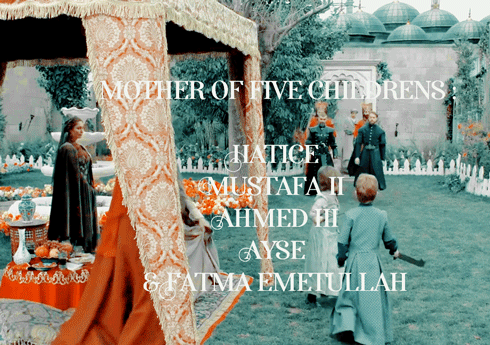

woman that i love: [2/5]
↠ emetullah rabia gulnus sultan
↠ haseki & valide sultan of the ottoman empire
Born around 1642 under the name Evmania Vorya, popular folklore says that she was the daughter of an Orthodox bishop, descendant of the Verzzini family who founded the town of Rethmyno in Crete.
According to tradition, she and her two sisters were captured at the start of the Cretan War, around 1646. Her two sisters were bought by Pasha at the Istanbul market, while Gulnus was sold for the imperial harem
Educated in the harem, which renamed her (perhaps) Emetullah Rabia Gülnus, she became, at an unknown date, Mehmed's concubine. The Venetian ambassador described her as a tall, slender woman with black curly hair and blue eyes.
She gave him her first child: a daughter, Hatice, around 1660, then her first son, Mustafa, in 1664. Of a total of five children, four will reach adulthood (only Ayse died in childhood)
After Mustafa’s birth, Gülnus was named Haseki Sultan. She was the only (or one of the very few) haseki to accompany her husband on military campaigns, and far from the battlefields, she was known to join him on his hunting parties. Mehmed insisted each time, to take her with him. Subject of contemporary European engravings, she was drawing riding a horse. His son, Ahmed, was the first sultan born outside of Turkey, in the present-day Bulgaria, in December 1673.
A myth on Ottoman empire was the possibly rivalry between Gülnus and the concubine Gülbeyaz and possibly lead the murder of that concubine. If rivalry was largely possible, murder seem exagerate or invented.
Following the deposition of Mehmed IV, Gülnus was exiled in the old palace and separated from his sons. Afife Kadin wrote in her poems that she regularly heard Gülnus screaming and crying between the walls of her room.
After the reigns of Ahmed II and Süleyman II, in 1695, Gülnus became Valide Sultan for his eldest son. Unfortunately, it is deposed in 1703 and Gülnus confirms the deposition. Ahmed succeeds his brother. To calm the people angry with the Valide Sultan, he exiles him briefly to the Old Palace.
In 1711, it was she who persuaded Ahmed to declare war on Russia after two years of propaganda in favor of an alliance with the Swedish king Charles XII. Gülnus persuaded his son that the king was a man worth taking a risk.
Emetullah Rabia Gülnus died of illness in 1715, possibly at the age of seventeen.
#get to know me#emetullah rabia gulnus sultan#ottoman empire#sultanate of women#*mine#*women that i love#history#ottoman history
83 notes
·
View notes
Note
Leyla Feray was a perfect "Ayşe Sultan", Farah Zeynep is not that pretty plus the role of a sultana didn't suit her and of course Farya as a character sucks ! Still bitter about Tims's casting for Turhan Hatice and for how they portrayed her and she only appeared in 3 episodes Ibrahim's reign deserved its own season
I agree Anon. Harem didn’t play an important role during Murad’s reign, so to be honest I would be satisfied with having only Ayşe as a developed character. Harem during Ibrahim’s role played a HUGE role and the fact that we didn’t get all the harem dynamics of that period explored properly is my huge regret and I can bet show’s creators feel the same because they obviously planned for Season 3 devoted wholly to Ibrahim’s reign.. but such is Turkish TV market now and they still delivered a story of Kösem’s life that made sense, which is more you can tell of many TV shows nowadays, even those with huge budget and safe position like Game of Thrones that HBO would have likely prolonged as much as they could, but D&D were certain they had enough time to wrap everything up properly lol. So in those conditions,not knowing when they may get axed (and Turkish shows are filmed like two weeks in advance only), I still appreciate what they did… Now that my initial expectations about whole season of Turhan/Kösem rivalry, Ibrahim’s harem, Turhan of my dreams are more in past, I’m more able to appreciate what we got in that conditions eh.
Devoting so much time to Farya and Murya was HUGE mistake, since it didn’t save the ratings by bringing FZA’s fanbase etc., and it truly stole a lot of precious screentime later. The pacing issues are in MYK from start – back in S1 they introduced Beren earlier than planned and then rushed to end S1 with Kösem becoming regent because they weren’t sure they would get renewed. Maybe it’s crying over spilt milk now, especially since they are obviously aware that they had made a huge mistake – Farya’s screentime was clearly strongly reduced after 10 episodes and after she was removed, she was practically never mentioned again, like they pretended she had never existed lol.
Mhm I don’t think actresses’ appearance is of importance here, sultanas were normal girls, I know it is often assumed that they had to be pretty to captivate the padişah, but it was not always the case - Hürrem apparently wasn’t that conventionally pretty, but managed to charm Suleiman so much regardless. And each sultan had his own preferences. There isn’t something like “a sultana look”. I hear people talking “this actress is too pretty to play a subject, not a sultana” and I’m like ???? Royal blood doesn’t make you pretty either.
I think Leyla was absolutely fine. I liked her cutesy image in contrast to Murad’s violent nature. You can see why this girl “brought him peace” and why he ultimately destroyed her… just episode before she makes the big mistake and helps Gülbahar out, Murad threatens her to become her nightmare after Farya told him about her suspicions. She was soo scared, she was willing to do everything just not to face Mu/rat’s /spelling intentional/ wrath. And then she regretted what had done so much when she heard about people who suffered in the fire and wanted to fight Gülbahar as mother of Murad’s kids and his woman… and poor thing ultimately got exposed for wanting to fix things… #AyseDeservedBetter
I’m not satisifed with the Turhan we got, but after reading more stuff about Kösem vs Turhan conflict I’m now against the “Turhan was innocent cookie, who only jumped to her son’s defence” thing – it’s a clear example of “history being written by winners” thing. Turhan was definitely very good at propaganda – relationship between her and Ibrahim was surely tense and full of mutual dislike, and Mehmed ascending the throne and Ibrahim being dethroned surely was a good thing for her – yet in correspondence to statesmen that she wanted to bring to her side she described herself “as poor suffering widow, who just wants to punish those who killed her beloved husband”, among which she meant Kösem. There was even an occurrence when one of statesmen supporting Turhan went to Kösem to accuse her of killing Sultan Ibrahim and putting all blame on her, which reportedly shook Kösem very much. While Kösem likely did make moves to dethrone Mehmed, it’s very possible that the poisoning thing was invented by Turhan and her people to rally support. Reports put blame on “misinformation” on Suleiman Aga, who was treated as person inciting the showdown, but we know Suleiman Aga served Turhan, and it was a natural thing that servants of Imperial figures were blamed because nobody dared to accuse the actual Valide.
Turhan as Valide Sultan did not only manage harem, but was involved in state matters and the double rule often made it harder for Kösem to stabilise Empire. Turhan wasn’t deprived of being Valide Sultan; Kosem’s position was simply new & unprecedented and allowed her to be regent. While mothers began to play the role of regent recently (Kösem for Murad, Halime unofficially for Mustafa, Handan as co-regent together with Ahmed’s lala, even Mehmed III leaving the affairs in Safiye’s hands when he went on campaign to Hungary), there was no law on this and previously e.g. there was more inclination for Grand Vizier in this role.
In the end, they were both morally grey because while Kösem likely didn’t plan to poison Mehmed, of course there was always risk of him losing his life if any problems ensued following deposition, as the Ibrahim case showed.
Still, the innocent cookie defender of her son Turhan vs. evil hag Kösem narrative is not the true one.
We also must remember that:
Discretion prevented Ottoman writers from criticizing royal mothers (they did not record the hostile barbs directed by Ottoman statesmen at queen mothers and favorites which made their way into European accounts), but they did not hesitate to employ invective in he case of lesser women of the sultan’s harem. Naima, so careful to defend the young queen mother Turhan, criticized other concubines of the “mad” İbrahim with relish.
Taken from: Leslie Peirce, The Imperial Harem: Women and Sovereignty in the Otoman Empire.
I’ve found some evidence for Turhan being groomed by Kösem and Turhan’s involvement in politics even during Ibrahim’s reign (namely in connection with the Crete war), so while we don’t know much about the relationship between the two women before Mehmed’s reign, there is some evidence supporting MYK’s direction. Leslie Peirce states that Kösem groomed Turhan and Thys-Senocak mentions that Atike chose and trained her.
However, as a new slave woman in the palace, a gift of Kör Süleyman Pasha to the valide sultan Kösem, she had been trained by Atike Sultan, a sister of Murad IV, and groomed by Kösem, who presented her to her son.
Taken from: Leslie Peirce, The Imperial Harem: Women and Sovereignty in the Otoman Empire. Peirce also reiterates that Kösem groomed Turhan in her short article entitled Gender and Sexual Propriety in Ottoman Royal Women’s Patronage.
Training by Atike could be also on Kösem’s request, though we cannot say for certain Atike was Kösem’s daughter, but yet again Kösem seemed to pretty much take care of whole dynasty, not only her own children. It is interesting because the position of the mother of eldest son’s gained importance due to switch to seniority and we know for certain Turhan wasn’t Ibrahim’s favourite consort – but maybe again he was attracted to her at first and the relationship deteriorated later. Due to her being mother of eldest son, Turhan had to be aware that being Valide is in store for her, and Kösem also had to accept the fact.
The fact is that with four episodes the showrunners decided to focus more on the already established characters and Turhan got pretty much sacrificed for it – after all, it was Kösem’s story. I get what they did for abridged story purposes, but what I saw on screen did not reflect my imaginations of historical Turhan.
In the end, MYK Turhan represented an extreme version of a person brought up in Ottoman harem. She was completely cold and almost entirely devoid of human emotions, save in some scenes with her children or her sadness upon Ibrahim preferring other concubines. She was truly unscrupulous and desperate to get to the highest top aka becoming regent for her son, which meant he had to become padişah while he was still a minor. She truly wanted to have it all, even if she had a lot compared to other harem girls – she was a chief haseki with high position given to her by her mother-in-law, who truly treated her exceptionally compared to other Valides we saw – she shared her power with her, taught her political stuff and introduced her to political world, involving her in her own affairs and even taking her to secret councils with her. Kösem was undoubtedly aware that in light of Ibrahim’s illness she had to keep the mother of eldest prince satisifed&feeling safe because padişah like Ibrahim was an easy target for deposition. Not only Turhan had safe position due to seniority succession rules – Kösem clearly supported her and wanted her to be her successor, e.g. backed her up in the Zarife conflict. Yes, Ibrahim had other favourites, but he was a weak sultan and he wasn’t interested in this stuff at all – he just wanted to have fun with other girls and ignored Turhan, but he wasn’t politically involved enough to try to prevent Turhan from becoming next Valide because he simply didn’t give a damn most of the time.
Turhan’s going against Kösem was a huge & risky gamble, also for her son. It’s one thing to never trust anyone fully and be on your guard, and another to go on removing everyone, so whole rule is in your hands. While we know that relations between Ibrahim&Turhan were tense, there wasn’t any repeated pattern of abuse against her or their son – Ibrahim’s outburst and throwing Mehmed justifiably shook Turhan up, but it was clear it was one-time incident that stemmed more from Ibrahim’s illness than any sort of malice or sadism. He mostly simply ignored Turhan and didn’t want to spend time in her company. Perhaps Ibrahim being a weak padişah was also why Turhan looked at him with contempt because she couldn’t accept how this man stood higher in hierarchy than her, which wounded her pride additionally. Thus said, if her primary motive had been as she said fear of Ibrahim, I don’t think she would have gone against Kösem. Kösem was after all the person who defended her to Ibrahim, tried to calm him down with regards to Turhan and she obviously supported Turhan as next Valide. Additionally, when Kösem actually controlled Ibrahim and his behaviour – later Atike didn’t care, people who were trying to use him and make him crazier for their purposes achieved their goal. Turhan purposefully wanted to make him crazier and crazier to dethrone him and now she was in the palace without her biggest former supporter. Ibrahim was definitely in far worse mental condition after Kösem’s exile and Kemankeş’ removal. We got the taste of the danger when Ibrahim threatened to strangle Mehmed during the coup – and then we finally saw fear in Turhan’s eyes. But it was she who allowed the situation to boil down to this. Turhan’s backstabbing to Kösem wasn’t only a betrayal to a person who always supported her&did a lot to her (and it was something even Ibrahim highlighted after Kemankeş’ “execution” and since he also had beef with his mother at that point, it’s hard to take his words as biased), but also her sacrificing whole nation due to striving to make Ibrahim’s reign fail so much that he would be undoubtedly deposed.
Turhan’s final win isn’t so much a triumph of very well-thought-out long-term strategy, but luck, totally unscrupulous nature, not taking into account that any bystanders might be harmed, and Kösem making a fatal mistake in the end. Until the last stand, Kösem always managed to ultimately outsmart her, and Turhan’s final victory is only due to raw force, Kösem making a fatal mistake&Kuşçu’s betrayal for reasons Kösem didn’t deserve.
In the end, Turhan and her people represented raw power which adheres to no rules or honour. Not only did they kill so many innocent people, but also showed no rules in the final stand – Kösem is strangled on the harem floor and her body is plundered (a historical fact, sadly), and Turhan only stays on balcony with devilish smile over the slaughtered palace. Köprülü does not face the elderly Kemankeş himself, but waits until his people defeat him to slice his throat. Haci is also murdered in unnecessarily cruel way by having his neck twisted in front of Tuhan bearing her stone cold face as she usually does. Turhan was presented as pretty much extreme product of that system – someone who is always coldly calculating, showing little human emotions (maybe only towards her kids) and only focused on achieving one’s goal without any scruples, and is unable to bond with anyone other than her kids. Same with people surrounding her, there are no strong, touching & genuine relationships like in Kösem’s team, which is based on loyalty that may mean even paying with death for it. There’s strong friendship between Haci & Kösem, same with Kemankeş and Deli Hüseyin, Kösem and Kemankeş deeply and truly love each other until the end, Hüseyin also prefers to die than to support Turhan. Even Lalezar’s “betrayal” is only about not letting an innocent child die, not wanting to support Turhan or switch sides for her personal gain. In a way, Turhan functions as some symbol of end of Empire, same with the depressing final shots, which is also accentuated in Kösem’s final monologue: ‘The lights have gone out, no right, no left, no death, no back, no forward, no top, no bottom (…) ” . I can see the rationale – it was first and foremost Kösem’s story, moreover a story that needed to be abridged.
However, as I said, Turhan is a real-life historical figure that actually did good things for the Empire, continued Kösem’s legacy and had her achievements, that’s why historical Turhan can never be simply a destructive force in my mind, and it’s probably the highest divergence between historical figure and show figure I have in my mind as far as MY&MYK are concerned.
We see some glimpses of Turhan actually taking her responsibilities seriously in the final episode – she decides to spare Mehmed’s brothers (which actually serves pretty much as plot twist taking into account how her character has been portrayed) and declares she intends to take care of the state. Ironically, while Kösem paid for politically training Turhan & introducing her to political world with her life, at least even her ultimate enemy wanted to honour her legacy & obey anti-fratricide law & was prepared for ruling. It was a posthumous win for Kösem here.
Of course the way historical Turhan took power from Kösem was questionable – it was full of brutality, purges, and it’s hard to imagine it was all without knowledge of her and her closest associates. /Still we know that Turhan likely didn’t kill harem girls that served Kösem, but got them married off instead as Kumrular writes in her Kösem biography/. However, she also proved capable in taking care of state and dynasty and since Mehmed was pretty much an obedient momma’s boy, she had much easier task than Kösem to for example persuade him not to kill his brothers.. honestly, try to control someone like Murad, it was a huge success Kösem managed to save Ibrahim.
I think that the portrayal of Turhan and her people may stem from not only brutal purges that followed Kösem’s death, but also from the period after Turhan appointed Köprülü the Grand Vizier – Peirce compares some of his methods to Murad’s and this period to Murad’s reign. While it was Köprülü who used bloody methods, we can guess that Turhan would have not let him stay GV if she had not accepted it. It is curious how Turhan/Murad emerged a pretty popular crackship in MYK… I was always like “they gave us Turhan who seems like a perfect match for Murad”.. just that her ruthlessness does not stem from anger, but more from cold detachment (fire and ice LMAO). I know some like to refer to Turhan as “Iron Lady”, so I suppose it was what MYK creators intended. /There is of course some anger in her too - when Ibrahim told her that she was just a coward hiding under his mother’s skirts… you just knew she would NEVER let it slide and prove to him & the rest of the world she didn’t need Kösem to stay on top./
The more I think the more I’d really love to see Müge Boz as Turhan, since Turhan wasdescribed as pretty unassuming and that was also why she was able to rally supporters. It would be cool to see Kösem facing a girl looking like young her, but not innocent… yet using her innocent image. And again we should have seen more of her showing care for state. I’m actually glad we didn’t get the simple Kösem turns into Safye and encounters an innocent Anastasia that we all expected. Now I think we needed something more complex, and as I mentioned it Kösem truly didn’t turn into Safiye, while many of Turhan’s actions (like mass slaughter in harem) resemble Safiye more – yet later her son is truly in danger, so there’s some rationale in that and we see some of Kösem’s legacy in her declaration to spare Mehmed’s brothers and take care of the state.
Likely it was intentional to make Turhan so much like the opposite of innocent Nasya.
But in the end, while there are hints of Kösem legacy being preserved (Turhan clearly wants to obey anti-fratricide law), Turhan pretty much served as a symbol of future fall of Empire because the final images of slaughtered people and her smirking on balcony in her slay kween (pretty pretentious) attire, accompanied by the above mentioned monologue, pretty much give a glimpse of apocalypse. /And LBR she claimed she had started the whole conflict for her son… then why the fuck she stands shouting to “bend the knee or die” & “show no mercy” or grins on the balcony instead of sitting with her son or at least checking up on him?/
It’s kinda fitting end for Kösem story, where she was the protagonist, especially when we see how yellow filter & fairytale elements from first episodes of MYK (which gradually become less bright) to the total darkness and atmosphere of doom of final episode. Still, as I said, Turhan Sultan is a historical figure that deserves more.
In a way, we were by default robbed of a satisfying depiction of Turhan by the mere fact that Ibrahim’s regin was abridged to 4 episodes – we should have got her early days in harem, her growing up etc., but I think at this point I decided to stop crying over spilt milk, I think, even though the mere fact that some fake princess got 22 episodes and Turhan 4 is always gonna hurt.
- Joanna
#turhan hatice sultan#magnificent century kosem#muhteşem yüzyıl kösem#muhtesem yuzyil kosem#ottoman history#kosem sultan#history#answered#mods opinions
40 notes
·
View notes
Text
The four Haseki and their relationship with beloved Mothers-in-Law

We'll come closer to the end of Kösem sultan and her magnificent story :,(. Now let me present these four ambitious hasekis in different time but lived below the same sky (don’t ask me why I included Ayşe, just keep reading it! ;-) and why I don’t include Hürrem vs Valide Ayşe Hafsa because mainly I forgot their story XP). Hürrem started this "opposing your mother-in-law" continued with Nurbanu to Turhan sultan (only in MY and MYK dear, not historically), but how their stories differ? Let's see...:
Afife Nurbanu Sultan:
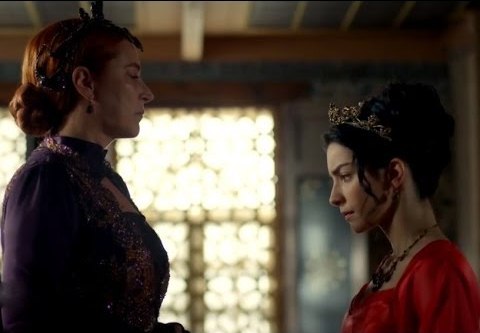
Her mother-in-law was Hürrem sultan, Hürrem wanted her to be a smart but obedient daughter-in-law, she became a gozde (favorite) to sehzade Selim (later Selim II). Iirc, Nurbanu's conflict with Hürrem started when Hürrem refused to protect & defend her after she had fight with Hurichihan (Hatice sultan's daughter) & caused her death. Afraid to the consequence of her deed, she threatened Hürrem to show her letter about ordering Nurbanu to kill Suleyman I's other gozde, Nazenin hatun, from this onwards their conflict began. Other factor that driven Nurbanu is her ambition to support Selim to be the successor, next sultan after Suleyman I, especially after she found that Hürrem was supporting her other son, sehzade Bayezid. Her conflict with Hürrem mainly to prevent and foiled her to support Beyazid. Even after Hurrem's death, Nurbanu was still occupied with Beyazid's remaining supporters (including Mihrimah & Rustem->though Rustem would betray later via Gracia Mendes' seduction (LOL)).
Mahpeyker Kösem Sultan:
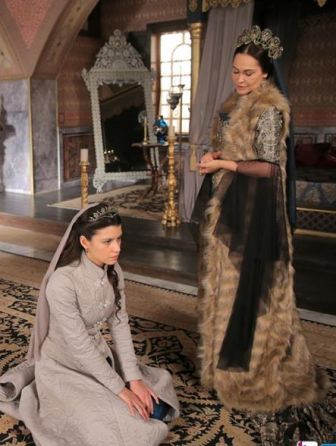
Her actual mother-in-law was Handan sultan, but her nemesis (in the show) was Safiye sultan, Handan's mother-in-law & the grandmother of Kosem's spouse Ahmed I. Similar with Hürrem, Safiye intended to present Kösem to Ahmed and use her to influence & control his power. Their conflict started when Safiye, unable to control Kösem anymore, decided to kill her father. Feeling betrayed, Kösem decided to avenge her father's death (while being a heroine too) by leading Safiye's daughter, Fahriye sultan to her death. Safiye repaid it with Yasemin hatun (Kösem's sister)'s death and Kösem paid it back with Iskender/sehzade Yahya (Safiye's missing son)'s death. Also Kösem being heroine wanted to protect Ahmed and the state from her, especially when Safiye did the coup d'etat, causing chaos in the palace. Not long after, Ahmed died, leaving Kösem with her little children fighting Safiye (and later Halime) alone.
Ayşe Sultan:
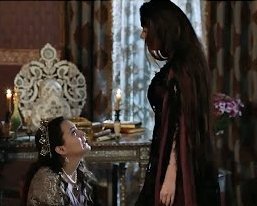
Her mother-in-law was Kösem sultan and her spouse was sultan Murad IV. Like Hürrem and Safiye, Kösem too expected that Ayşe would be an obedient, helpful & easily controlled by her. I think during the very first episode of season 2, there would be a rivalry and conflict between Ayşe and Kösem, how Ayşe said that she wished to support Murad and keep him away from the influence of his mother in ruling the state. Ayşe also said that she refused to follow every Kosem's orders and be obedient to her. Too bad this rivalry concept got thrown out and replaced with her fake rivalry with Farya as Mahidevran 2.0. Ayse's story here would be mainly fanon:
After Kösem's ten years regency, Murad became the sultan officially (I mean, the time when Murad was able to govern the state independently), but with Kösem's influence in the government, viziers & jannisaries, they were already familiar and support her and the people greatly trust her. Murad was struggling to gain the trust and recognition from his people. Everyone (including viziers and jannisaries) still doubted this young sultan's capability to rule, they always compared him to Kösem. Murad wanted to step out from his mother's shadow, he tried to limit Kosem's power and influence, he wanted his mother as valide sultan back to her initial duty, managing the harem. As loyal spouse and his most beloved woman, Ayşe supported Murad and helped him to be able to rule independently by trying to dispel and keep him away from his mother's influence, she also managed to seek the support from the people including some viziers. Ayşe chose to be a good wife and queen/haseki who supported her spouse the sultan in government rather than being used and controlled by his mother. Thus her conflict with Kösem sultan began. Besides her conflict with Kösem, Ayşe also had her own problem, she was struggling to provide Murad a healthy sehzade who would have his chance to survive adulthood and become the heir for Murad's throne. Murad's relationship with his mother was gradually strained. Seeing her son's insubordination to her, Kösem decided to get rid of Ayşe as the mastermind of the destruction of their family relationships. Their rivalry was fierce until Murad's death came. Ayşe who had lost her greatest support (and love) Murad and lost her sehzade who could be made an heir, lost her power, influence and purpose completely. She was immediately removed by Kösem and sent away to live in the Old Palace.
Turhan Hatice Sultan:

Her mother-in-law was also Kösem sultan and she was the spouse of Ibrahim I. Turhan had learned all the tales of the powerful sultana in Ottoman and had her own ambition. She saw Kösem as her role model and at the same time she wanted to be like her. Kösem still expected her to be easily controlled and obedient to her but Turhan thought that being obedient and passive won't make her a powerful figure. She found that to fight her mother-in-law, she had to get her sultan's support. Observing her situation and circumstance, getting the support from her spouse seemed difficult since Ibrahim had numerous gozde that he loved, he even appointed his eight gozde (including her) as his haseki. Turhan could become the Baş Haseki had been a lucky one for her since she had Ibrahim's oldest sehzade Mehmed. The odds of getting support from her spouse are getting smaller as he brought new gozde again and this gozde became his legal wife (Telli Humaşah). Thus, rather than wage an open war to Kösem, she decided to gain the trust for her. By being the closest person to Kösem, she could observe everything, from how Kösem gains her supports to find a chance to overthrow her. During this time, Turhan managed to gain the trust of viziers, but Kösem still had the most influence in jannisaries. Turhan also tried her best to secure her son and protect him as the next heir after Ibrahim's death. When Ibrahim died, Mehmed the oldest sehzade succeeded him. But as long as Kösem still alive, her struggle was not over yet. Kösem who had many experience as regent thought that inexperienced Turhan wasn't competent enough to rule the state, Kösem was preventing her to be in charge of state affairs. Turhan disagreed since she felt entitled as the mother of Mehmed IV. Kösem later went to far by attempting to remove Mehmed and replaced him with sehzade Suleyman (the son of supposedly more obedient haseki Saliha Dilasub). Driven by her will to protect her son's life, Turhan decided to get rid Kösem completely and her men successfully murdered her. Eventually, Turhan became regent and rule the state together with her son. My fanon is that the previous haseki sultan Ayşe wanted have her revenge with Kösem, so she temporarily helped Turhan behind the scene.
Summary:
Many young sultana during their time as queen consort (haseki) had strained relationship with her mother-in-law, the queen dowager (valide sultan), they had similar ambitions but they had their different motivation and situation.
In Nurbanu's case, she was a favorite of Selim II during his sehzade years. There was sehzade Beyazid as threat who challenged Selim's way to be the heir. Being supportive to her spouse, Nurbanu made sure that Selim will success it. Nurbanu's main focused was how Selim would take the throne.
In Kösem's case, she initially was driven by revenge. But later when she found that Ahmed I her spouse's life was also in danger, she fought to protect him. Safiye's failed attempt to control Ahmed drove her to led a coup d'etat. Ahmed with the help of Kösem successfully weakened Safiye's power and influence. But not long after that, Ahmed died and Kösem lost her greatest support. Kösem became alone surrounded with many dangerous snakes especially Safiye and Halime, though in the end she was able to get rid of them.
In Ayse's case, Murad became a sultan who just been deemed worthy to rule by his own. Ayşe helped Murad to gain the trust and to be recognized by his people, she wanted him to get out from Kösem's shadow. Ayşe also had another burden since Murad didn't have an apparent heir yet. In the end Murad died without heir and his brother Ibrahim was the one who succeeded him. Ayşe lost her position and had to spend her life in the Old Palace according to the custom.
In Turhan's case and during her time, Ibrahim I had his eight harem girls as the haseki. Turhan happened to bore him the oldest sehzade Mehmed thus she became the Baş haseki. Turhan had to face her many harem rivals including the greatest threat who was Telli Humaşah, the girl Ibrahim brought and became his legal wife. Turhan was not really loved by Ibrahim (as she was not his most favorite). After Ibrahim's death, Turhan had her power struggle with Kösem sultan. She wanted to be regent ruling independently but her reign always overshadowed by Kösem. Their conflict became worse when Kösem wanted to get rid of Turhan's son and replaced him with her other grandson, thus leading to Kosem's death by Turhan's men hands.
TL;DR
All had their conflict with their MiLs but Nurbanu was haseki of sehzade whereas Kösem, Ayşe and Turhan were haseki of sultans. All supposedly outlived their MiL but canon MYK!Ayşe died before Kösem. Although Kösem had her conflict with her actual MiL Handan, her main nemesis was Safiye sultan, her MiL's MiL (or should I say grandmother-in-law). Nurbanu's spouse Selim I outlived his mother but Ahmed I (Kosem's spouse), Murad IV (Ayse's spouse) and Ibrahim I (Turhan's spouse) died before their mothers (and grandmother in Ahmed's case). Nurbanu, Kösem and Turhan had their surviving sons took his fathers' throne whereas Ayşe didn't. Nurbanu, Kösem and Ayşe were loved and greatly supported by their spouses whereas Turhan was not really (but canon-MYK!Ayşe instead was greatly abused and hated by him), Ibrahim might loved Turhan but she was not his most beloved one. Nurbanu, Kösem and Turhan succeeded in becoming valide sultan and became the most powerful sultana in their respective era whereas only Ayşe who couldn’t make it since she didn’t have a sehzade (the prince), the most important asset for every women as royals.
Conclusion:
Powerful and ambitious women in MY and MYK always expect their daughters-in-law to be the obedient and easily-controlled. Unbeknownst for them, they became the role models of their younger generations. Thus, instead having the obedient DiL, they got their own reflection: the DiL that exactly the same with their younger selves. These DiL won’t easily submit to them just like themselves in their younger days.
Also I wonder when Turhan’s hair color was mentioned as blonde, There is no popular culture that show Turhan with blonde hair. Mahpeyker: Kösem Sultan’s Turhan was brunette and Muhteşem Yüzyıl: Kösem‘s Turhan is dark haired (likely black). I’m sorry with my shitty bad quality editing but I want my Turhan’s blonde XD, I’m not expert.
#valide sultan#haseki sultan#muhtesem yuzyil#muhtesem yuzyil kosem#my thoughts#mother in law vs daughter in law#ottoman empire#hurrem sultan#nurbanu sultan#safiye sultan#kosem sultan#ayse haseki sultan#turhan hatice sultan#haseki ayse sultan's story is mainly fanon#canon!MYK story gave Ayse's story & character injustice#canon!MYK is not historically canon either#respect haseki ayse post#blonde!Turhan
21 notes
·
View notes
Photo

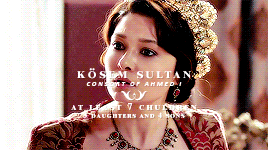




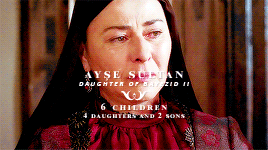

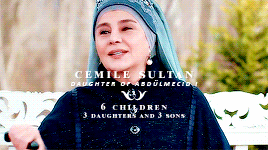
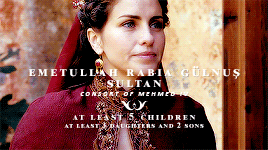
Ottoman women who had the most children
#history#historyedit#ottoman history#humasah sultan daughter of sehzade mehmed#kosem sultan#hatice sultan daughter of selim i#hafsa sultan daughter of mehmed i#fatma hundi hatun daughter of bayezid i#haseki hurrem sultan#ayse sultan daughter of bayezid ii#hatice sultan daughter of mehmed iv#cemile sultan daughter of abdulmecid i#emetullah rabia gulnus sultan#ottomanladiesedit
191 notes
·
View notes
Photo










𝐢𝐧 𝐭𝐡𝐞 𝐦𝐨𝐧𝐭𝐡 𝐨𝐟 𝐣𝐮𝐥𝐲 𝐢𝐧 𝐨𝐭𝐭𝐨𝐦𝐚𝐧 𝐡𝐢𝐬𝐭𝐨𝐫𝐲
#history#historyedit#ottoman history#on this day in ottoman history#mahmud ii#mihrimah sultan daughter of mahmud ii#fehime sultan daughter of murad v#mehmed v#esma sultan daughter of abdulhamid i#hatice sultan daughter of mustafa iii#hatice sultan daughter of mehmed iv#murad iii#mehmed i#ottomanladiesedit#*everymonth
113 notes
·
View notes
Note
Princesses who were politically active?
Nefise Melek Hatun: daughter of Murad I, she married Karamânoğlu Alâeddîn Alî Bey and acted as mediator between her father and her husband during the Ottoman-Karaman conflict.
Selçuk Hatun: daughter of Mehmed I, she had a long life in which she acted as ambassador in the conflict between the future Bayezid II and his half-brother Cem
Mihrimah Sultan: daughter of Suleyman I and Hurrem Sultan, she was married to the Grand Vizier but exerted political influence in her own right as well. As a widow, she helped her brother Selim II both politically and economically (lending him money to pay the troops). She also managed the harem for him. Her daughter Ayşe Hümâ-Şâh was influential as well, being married to her father's successor.
Ismihan Sultan: daughter of Selim II, she was married to the Grand Vizier and as such was the most influential among her sisters. She also wrote to Catherine de Medici about some Turkish ladies who had been captured by Frenchmen at sea.
Hatice Sultan: daughter of Mehmed IV, she became her brother Ahmed III's advisor during his reign and she was one of the people who stayed with him until the end.
Fatma Sultan: daughter of Ahmed III, she was regarded as the true power in the Tulip Era. She was married to the Grand Vizier and even entertained foreign ambassadors who wanted to speak with him or with her father.
Esma Sultan the elder: daughter of Ahmed III, she became influential during the reigns of her brothers Mustafa III and Abdülhamid I to the point she was called a new Ismihan Sultan. She also was married to the Grand Vizier. Esma Sultan prevented a coup d’état against Abdülhamid I by warning him that Halil Hamid Paşa planned to depose him in favour of Şehzade Selim
Beyhan and Hatice Sultan: daughters of Mustafa III, they were behind the process of modernization in palace life and were very influential during their half-brother Selim III's reign.
Esma Sultan the younger: daughter of Abdülhamid I, she was Mahmud II's favourite sister even though they had different mothers. She was selected by dissidents as a possible replacement for Mahmud II on the throne.
Seniha Sultan and Fatma Sultan: daughters of Abdülmecid I, they were against Abdülhamid II's rule and tried to free Murad V from Çırağan Palace to put him back on the throne. In this they were helped by their brothers Ahmed Kemaleddin and Selim Süleyman.
Fehime Sultan: daughter of Murad V, she was a supporter of the constitution and composed a piano sonata titled "Pour La Constitution"
I hope I haven’t forgotten anyone. If I did, I’m sorry.
#anon#ask post#ask: ottoman history#nefise hatun daughter of murad i#selcuk hatun daughter of mehmed i#mihrimah sultan#ismihan sultan daughter of selim ii#hatice sultan daughter of mehmed iv#fatma sultan daughter of ahmed iii#esma sultan daughter of ahmed iii#beyhan sultan daughter of mustafa iii#hatice sultan daughter of mustafa iii#esma sultan daughter of abdulhamid i#seniha sultan daughter of abdulmecid i#fatma sultan daughter of abdulmecid i#fehime sultan daughter of murad v
58 notes
·
View notes
Note
Was it mandatory for widowed princess to stay at old palace? What if they want to stay at their own purchased palace? Is it possible?
No, it wasn't, but I guess it depended on the degree of closeness the widowed princess had with the sultan and whether she was asked to marry again or not.
Esma Sultan the younger was widowed in her twenties, decided to never remarry, and lived the rest of her life in her palace. Her cousin Hatice Sultan did the same (I think she built her new palace when she was already a widow). Sisters Fatma and Seniha (daughters of Abdülmecid I) lived in their villas after the former's husband was exiled and executed and the latter's fled the empire. But those were different times and the Old Palace wasn't used anymore.
I tried to find an earlier example but I couldn't come with much. Hatice Sultan (Mehmed IV's daughter) outlived her second husband of 30 years, and she was certainly in Istanbul during Ahmed III's reign because she advised him to sacrifice statesmen during the Patrona revolt to save his life. I think she lived in her own palace, the Hatice Sultan Palace, located just outside the Ayvansaray Gate, but I couldn't find hard proof of this. She died in Edirne, though, and Sakaoğlu says that she died "in her own palace" so it's possible that she had moved for health problems or because she wasn't well-accepted in the new regime (though she was Mahmud I's aunt too so...)
#anon#ask post#ask: ottoman history#esma sultan daughter of abdulhamid i#hatice sultan daughter of mustafa iii#fatma sultan daughter of abdulmecid i#seniha sultan daughter of abdulmecid i#hatice sultan daughter of mehmed iv#Anonymous
11 notes
·
View notes
Note
hope you are fine! Who is Hatice sultan in bir zamanlar osmanli: Kiyam? .. can you write some political action and importance of hers?
She is Mehmed IV and Emetullah Râbia Gülnûş' eldest child and lived through six reigns: her father, her uncles Ahmed II's and Suleyman II's, her younger brothers Mustafa II's and Ahmed III's and, finally, her nephew Mahmud I.
This is her tag on my blog, if you want to read what I wrote about her.
Hatice actually wasn't that influential until the very end of Ahmed III's reign, when she became the only advisor he would trust. She was the one who told him to sacrifice Nevşehirli İbrahim Paşa's life to save himself during the Patrona Halil revolt.
5 notes
·
View notes
Note
The youngest Ottoman princess to become a mother?
The problem is sometimes we don't have exact dates of births so it is quite difficult to say. Nevertheless, this is what I have found:
Selçuk Sultan, daughter of Bayezid II: her first child, Sultân-zâde Gaazî Husrev Bey/Paşa, seems to have been born when she was fifteen
Fatma Sultan, daughter of Selim II: her first (?) child, Sultân-zâde Ahmed Bey, seems to have been born when she was fifteen
Gevherhan Sultan, daughter of Ahmed I: if we believe 1608 to have been her date of birth, it seems that she had a child at the age of 12. Taking into consideration the whole trend, twelve seems to be a little too early even for a princess.
Hatice Sultan, daughter of Mehmed IV: her first child, Sultân-zâde Mehmed Bey, seems to have been born when she was sixteen.
Fatma Sultan, daughter of Ahmed III: her only (?) child, Sultân-zâde Mehmed Bey, seems to have been born when she was fourteen
Saliha Sultan, daughter of Ahmed III: her first child, Sultân-zâde Ahmed Bey, seems to have been born when she was fourteen
Ayşe Dürrüşehvar Hanım, daughter of Abdülhamid I: her first daughter, Atıyyetullâh Hanım, seems to have been born when she was around fifteen
Fatma Sultan, daughter of Abdülmecid I: her first child, Cemile Hanım-Sultân, was born when she was fifteen.
Mediha Sultan, daughter of Abdülmecid I: her only child, Sultân-zâde 'Abdurrahmân Sâmî Beyefendi, was born when she was fifteen
Without considering Gevherhan Sultan, which seems an anomaly but also could be the result of wrong information, it seems that the earliest that princesses gave birth was at the age of fourteen. Of course, we don’t have all the dates so there could have been earlier births.
#anon#ask post#ask: ottoman history#selcuk sultan daughter of bayezid ii#fatma sultan daughter of selim ii#gevherhan sultan daughter of ahmed i#hatice sultan daughter of mehmed iv#saliha sultan daughter of ahmed iii#fatma sultan daughter of ahmed iii#ayse durrusehvar hanim daughter of abdulhamid i#fatma sultan daughter of abdulmecid i#mediha sultan daughter of abdulmecid i#Anonymous
19 notes
·
View notes
Photo







Ottoman Princesses named: Hatice
Hatice is the Turkish equivalent of the Arabic name Khadija, the name of the first wife of Prophet Muhammad. As such, it was one of the most popular names in the Ottoman Dynasty both for princesses and consorts.
#history#historyedit#ottoman history#hatice hatun daughter of orhan#hatice hatun daughter of murad ii#hatice sultan daughter of mehmed iii#hatice sultan daughter of mehmed iv#hatice sultan daughter of mustafa iii#hatice sultan daughter of mahmud ii#hatice sultan daughter of murad v#durrusehvar sultan daughter of abdulmecid ii#ottomanladiesedit#princessesnames#hatice hatun daughter of mehmed i#hatice sultan daughter of bayezid ii#hatice sultan daughter of sehzade bayezid#hatice sultan daughter of ahmed iii#hatice sukriye sultan daughter of sehzade yusuf izzeddin#long post
1K notes
·
View notes
Photo


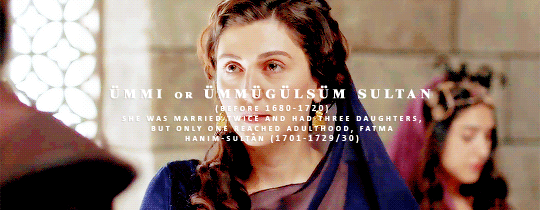
Mehmed IV of the Ottoman Empire + daughters who reached adulthood
#history#historyedit#ottoman history#mehmed iv#hatice sultan daughter of mehmed iv#fatma emetullah sultan daughter of mehmed iv#ummi sultan daughter of mehmed iv#ottomanladiesedit#daughtersof
195 notes
·
View notes
Photo
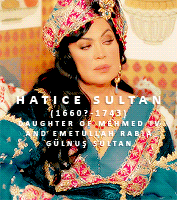
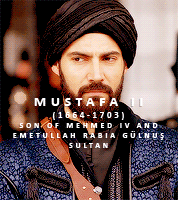




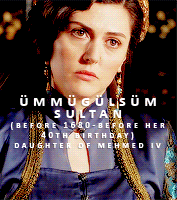

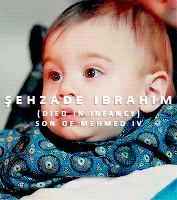
Turhan Hatice Sultan + known grandchildren
#history#historyedit#ottoman history#turhan hatice sultan#hatice sultan daughter of mehmed iv#mustafa ii#ahmed iii#fatma emetullah sultan daughter of mehmed iv#ayse sultan daughter of mehmed iv#ummugulsum sultan daughter of mehmed iv#sehzade bayezid son of mehmed iv#sehzade suleyman son of mehmed iv#sehzade ibrahim son of mehmed iv#*requested#ottomanladiesedit
536 notes
·
View notes
Photo




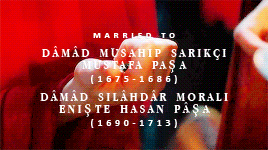
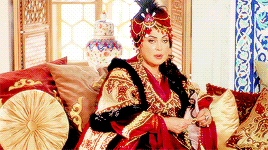
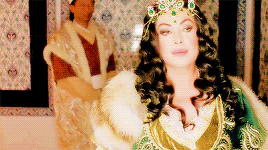
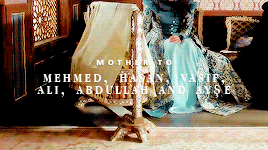
On this day in Ottoman history - 5 July 1743 - Hatice Sultan, daughter of Mehmed IV, died:
"The assembly decided that the sovereign should proceed immediately to Constantinople, preceded by the sacred standard, and followed by the princes and his whole court. Before embarking, the Sultan wanted to once again take the advice of his sister, the Sultana [Hatice], who advised him to keep all his ministers close to himself, in order to keep his life by sacrificing theirs, in case the rebels asked for a satisfaction of this kind."
Sound advice, but it did not preserve the Sultan from deposition. It must be said that this princess had had a good experience in the field, having already witnessed the revolt that resulted in the deposition of her father; besides, she was also among the elder women of the dynasty, an elder whom the years had made wise." -- Juliette Dumas, Les perles de nacre du sultanat: Les princesses ottomanes (mi-XVe – mi-XVIIIe siècle)
#history#historymeme#on this day in ottoman history#ottoman history#hatice sultan daughter of mehmed iv#ottomanladiesedit
276 notes
·
View notes
Quote
Three sugar gardens made for the 1675 wedding of Hatice Sultan, the eldest daughter of Mehmed IV, contained sugar nightingales and other birds, lions, roe deer, fish and camels, according to the poet Nabi. Another observer recorded:
Then followed, in two files on each side of the way, 120 sugar-workers, borne on frames by two slaves a piece, sedan wise, made from 2 1/2 foot to a yard and a half high, some more or less as the fancy required. They were Ostridges, Peacocks, swans, Pelicans etc., Lyons, Beares, greyhoundes, dear (deer), horses, Elephants, Rams, Buffaloes etc.
Mark McWilliams, Celebration: Proceedings of the Oxford Symposium on Food and Cookery 2011
21 notes
·
View notes